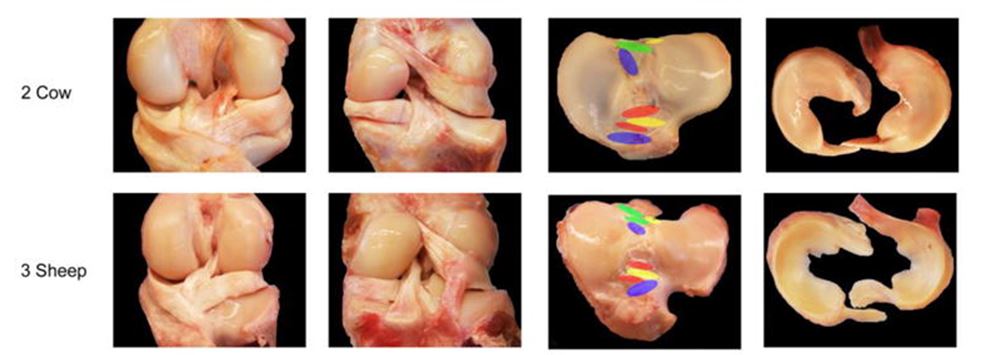Benedikt Proffen et al. in the article titled “A Comparative Anatomical Study of the Human Knee and Six Animal Species” discuss the need for effective treatments for intra-articular knee injuries and the importance of using large animal models for translational research in knee surgery. The study aims to systematically and quantitatively compare the anatomy of the intra-articular structures of the human knee with those of six animal species (cow, sheep, goat, dog, pig, and rabbit) to determine best-practice models for experimental knee surgery.
The study involved harvesting knees from the mentioned animal species and human cadavers. The knees were thawed, and passive range of motion was measured.
Dissections were performed to reveal the anatomy of the knee structures, including cruciate ligaments (ACL and PCL), menisci (medial and lateral), tibial plateau width, and intercondylar notch width.
Measurements were taken for length, width, and area of the structures, both directly and normalized by the tibial plateau width.
Subsequently, comparative statistical analysis was conducted to identify significant differences between the human knee and animal species.

The study highlights the significance of choosing appropriate animal models for knee surgery research.Differences in passive range of motion between quadruped animals and humans need to be considered.Various animal models have distinct anatomical characteristics, making certain species more suitable for specific aspects of knee research.
The study provides insights into the size, shape, and anatomy of knee structures across human and animal species.
To conclude, different animal models may be suitable for various types of knee surgery research based on anatomical similarities to the human knee.
Learn More:

This article was written by Elisa Bissacco as part of an ongoing series of scientific communications written and curated by BioTrib’s Early Stage Researchers.
She is studying a PhD in Tribological Characteristics of Nanofibrous Electrospun Materials at ETH Zurich.

